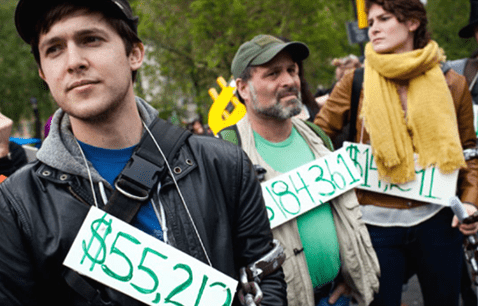The college years can be among the most fun years of your life, even with all that hard work and studying, the all-nighters, and the exam anxiety. But if you’ve taken out student loans to help you get through the college years financially—and many students have—your future financial burden may be weighing heavily on you as graduation approaches.
It’s natural to have concerns about how you’ll pay off your student loan debt. As you approach your graduation date, there’s often so much uncertainty about the future. You don’t know yet where you’ll be working, how much you’ll be making, or even how long it might take you to find a job and find your place in the career you’ve chosen. The financial burden of student loans can add substantially to the stress of all this uncertainty.
You aren’t alone. Most students who graduate with a mound of student debt have gone through the same fears and anxieties. While it may prove challenging to make those monthly payments after you graduate, there are options available to you that can help ease the burden. If you have any federal student loans, one of these options is the Obama Student Loan Forgiveness Program.
Federal Student Loan Forgiveness: Obama Student Loan Forgiveness Program
In 2010, President Barack Obama began tackling the issue of student loan reform with the Health Care and Education Reconciliation Act. President Obama’s national goal: “by 2020, America will once again have the highest proportion of college graduates in the world.” When people talk about the Obama Student Loan Forgiveness Program, they’re usually talking about these student loan reform initiatives implemented by President Obama.
Federal Student Loan Forgiveness Options
While there are actually five types of repayment plans under the Obama student loans program, three of them offer student loan forgiveness:
Income-Based Repayment (IBR) Plan.
Available to students enrolling in college in 2014 or later, the IBR plan limits payments to no more than ten percent of your discretionary income—that is, the portion of your income that’s above what’s required for you to meet your basic living expenses, such as food and housing.
Under the Income-Based plan, the remaining balance of eligible loans is forgiven after 20 years. For public service workers, student loan forgiveness occurs after ten years.
Pay As You Earn (PAYE) Repayment Plan.
The Pay As You Earn Repayment Plan is available to students who enrolled in college too early to take advantage of the income-based repayment plan.
Currently, the PAYE repayment plan is only available to borrowers who were new borrowers on or after October 2007. Under an executive order signed by President Obama, the PAYE plan will be expanded to all federal student loan borrowers, regardless of when they obtained their loans. Implementation of this expansion is expected late in 2015.
Monthly payments under the Pay As You Earn plan are no more than ten percent of your disposable income, and after 20 years, any remaining loan amounts are forgiven. Public service workers have their loans forgiven after ten years.
Income-Contingent Repayment (ICR) Plan.
Under this plan, your payments are calculated based on your income, family size, and loan balance. Since the payments are recalculated every year, they are adjusted to account for changes in these factors. The plan uses a formula which compares a payment of 20 percent of your monthly discretionary income to the payment you’d make in a 12-year standard repayment plan, multiplied by what’s known as an income percentage factor, which takes into account your income and your marital status. Under the Income-Contingent Repayment Plan, you’ll pay the lesser of these two payment amounts.
As with the other two repayment plans, the Income-Contingent Repayment plan also offers loan forgiveness. Any remaining student loans are forgiven after 25 years (ten for public service workers).
Federal Student Loan Forgiveness and Public Service Workers
Each of these repayment plan options offers public service workers a shorter period of loan payments before their student loans are forgiven. Under the Public Service Loan Forgiveness (PSLF) Program, college graduates who enter public service jobs full-time (in any position) have their student loans forgiven after ten years of loan payments.
The PSLF program is underutilized because many people don’t realize they qualify. The range of occupations that qualify as public service positions are quite broad and include teachers, nurses, law enforcement and emergency workers, members of the Armed Forces, and those who work for a not-for-profit organization with a 501(c)(3) designation. A full list of eligible public services can be found here.
If you feel mired under a mound of federal student debt, help yourself let go of some of that stress: look into the repayment options available under the Obama Student Loan Forgiveness Program and see which option will help you get a handle on your student debt.







